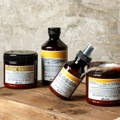We all know that no two heads of hair are alike. Each person’s hair is a unique and complex ecosystem. So why throw traditional cleansing methods—that have worked for us for years—out the window? Maybe this will convince you.
Reverse hair washing works in harmony with your hair’s natural structure, preserving its oils and maximizing the benefits of conditioning. When you start with conditioner, you create a ‘barrier’ shielding the hair shaft from damage during cleansing. Not only that, but the conditioner also helps detangle and soften the hair, making it more resilient to the shampooing process that will come next. Additionally, conditioners can leave the hair feeling limp and weighed down, especially when you fail to rinse them out completely. When you reverse the steps and shampoo at the end, you’re ensuring a thorough cleanse.













Leave a comment
Comments will be approved before showing up.